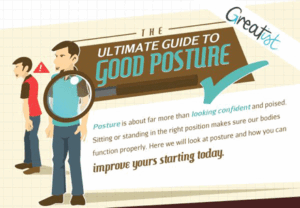Ganglion Cysts
The highly refined palpation skills of massage practitioners are such that we often identify tissue abnormalities before the client is aware of them. An indication that we should refer a patient for further evaluation is when we identify something we aren’t sure of but know shouldn’t normally be there.
One such example may occur with a synovial ganglion cyst, which occurs most commonly around the wrist, though they may occur elsewhere.
Exactly how and why these ganglions form is poorly understood. This makes it difficult to formulate a consistently reliable treatment. Despite the similarity in name, a ganglion cyst is different than the ganglion that is a collection of nerve cells. The ganglion cyst is a fibrous swelling that occurs near joints and is often associated with joint capsules or tendon sheaths. It contains a clear mucinous fluid that is different than the synovial fluid contained within joint capsules.
It is estimated that about 60 percent to 70 percent of all ganglions are dorsal wrist ganglions. Those on the volar surface of the wrist make up about 20 percent, and the remaining percentage occur in other regions of the body. The cysts are more common in women than men, and there does not appear to be any association with hand dominance. They are most commonly evaluated through clinical examination, although much greater detail about the makeup of the ganglion can be derived from a detailed diagnostic study, such as MRI. They usually become evident from a visible bump under the skin and may or may not be painful; however, as they get larger, they will likely become painful, especially if pressed. In some cases, the cysts may not be visible at all. These are called occult ganglions. You may discover them with palpation and treatment of the wrist region before the client is aware of them.
How and why ganglions occur is still something of a mystery. Various theories have suggested that they involve growths on the retinacula of tendons, knots of dysfunctional tissue, herniation of the synovial sheath of joints, or various other lesions. Some people report noticing them after an acute injury, but there is no significant evidence that suggests they are caused by another mechanical trauma to the region. Because the swelling can become pronounced, there is often concern about the nature of the problem. While for some it is a cosmetic issue, others may fear it is related to a more serious problem like a cancerous growth.
It is important to evaluate these other possibilities; however, the most likely pathology – especially with wrist ganglions – is not serious. In many cases, the ganglion itself will not be painful, but may cause pain because of where it is has developed. For example, ganglion cysts are one possible cause of pain from nerve entrapment in certain regions. Compression of the ulnar nerve in Guyon’s canal or the median nerve in the carpal tunnel can occur from ganglions. Since nerve entrapments in these regions can be relatively common, it is easy to overlook the presence of the ganglion as a cause in favor of one of the more common explanations for nerve entrapment pain.
There are a number of options for treatment of ganglion cysts. Ironically, pressure directly on the ganglion is still advocated by some as a means of treating it; however, you should not treat the ganglion by pressing on it. It is better to leave treatment decisions to other professionals. The more common procedure for ganglions is aspiration with a needle to remove the excess fluid and then let the ganglion dissipate on its own.
Luckily, few people today advocate the former treatment, which was to whack the ganglions with the Bible! There are a number of reports in the medical literature about distal radius fractures that occurred from this “treatment.” Knowing a little more about ganglions will help you address the problem when you come upon it.
Ready to #feelbetter?
You're just a click away from a wicked good massage!
-

60 Minute Massage Gift Card
$170.00 Add to cart -

90 Minute Massage Gift Card
$255.00 Add to cart -

Mini Aer Small Room Air Purifier
$149.00 Add to cart -
Sale!

Thera-Pearl Sports Pack/Hot Cold
Original price was: $14.99.$12.99Current price is: $12.99. Add to cart -

3 Somadome Sessions Gift Card
$135.00 Add to cart -

TheraBand CLX Connective Loop
$14.99 Select options -

6 Somadome Sessions Gift Card
$270.00 Add to cart -
Sale!

Biofreeze
Original price was: $14.99.$12.99Current price is: $12.99. Add to cart
Passion Mountain
I was at an event recently and was asked by somebody how I could STILL be so passionate for what I do. He said, “What I mean is that you talk about what you do with the passion of child flipping through a new pack of baseball cards. I wish I was that passionate about…
Read MoreFish You Should Scale Back On
New Englander’s love their seafood and we deepen our love affair every summer when our favorite crustaceans, ‘lobstah’ is a plentiful. But what is the best seafood for us and what are the ones that we should be staying away from regardless of how yummy they may be? Monterey Bay Aquarium has combined data from…
Read MoreSports are a Great Metaphor
It’s no secret that my life has always revolved around athletics. From my early days playing pop warner football, through my college years of lacrosse and on into the various community leagues since, being part of a team has always been where I feel most comfortable. What I enjoy most about being part of a…
Read MoreWhat is an Expert?
“An expert is someone widely recognized as a reliable source of technique or skill whose faculty for judging or deciding rightly, justly, or wisely is accorded authority and status by their peers or the public in a specific well-distinguished domain.” – Wikipedia This past month I flew to Atlanta to present a few classes in…
Read MoreThe Power of a Hug
Originally Posted 5/1/2014; following the 1 year anniversary of the Boston Marathon Bombings and our mission to rebound after these horrible attacks on our city. We helped orchestrate the ‘One Run for Boston’; a 3328.2 NON-STOP running relay from LA to Boston, raising over $500K for the victims and survivors of the events of 4/20/2013.…
Read MoreTips from the Table
Without fail, every marathon season, I am asked by my patients, what kind of advice I would offer up to them as they prepare to run the Boston marathon. I first admit that I have never (nor will ever) run a marathon, but given my unique insight of spending 1000’s of hours alone in a…
Read MoreShoulder Impingement
The glenohumeral joint is a highly complex articulation. It has the greatest range of motion of any joint in the body. However, its increased motion occurs at the expense of stability, requiring the soft tissues to play a more critical role in maintaining joint integrity. As a result of increased mechanical demands, numerous soft-tissue injuries…
Read MoreTrain, train, train. Train of fools.
In my seventeen years as a massage therapist, I am still amazed by some of the things I see in my office. Being situated 1/10th of a mile from the finish line of one of the most prestigious marathons in the world, the Boston Marathon, we see more than our fair share of runners coming…
Read MoreAchilles Tendon Disorder
Achilles Tendon Disorder Massage therapists see many clients with active lifestyles. Running, jumping, dancing, climbing, or any number of other activities can put serious stress on the Achilles tendon (AT). AT disorders also can contribute to biomechanical disorders in the foot and lower extremity. That is why it is important for the massage practitioner to…
Read More


